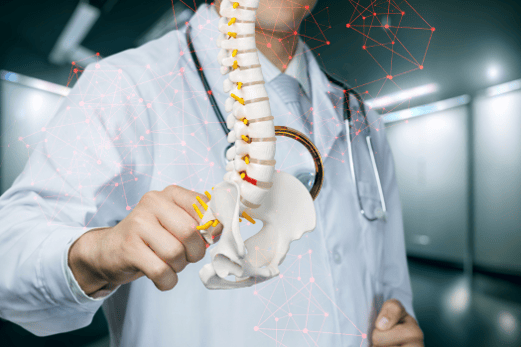
When it comes to spinal health, herniated discs are a common concern, and they can cause excruciating pain and limit your mobility. But have you ever wondered how many times you can herniate the same disc? This article will discuss the anatomy of spinal discs, the factors that contribute to herniations, and whether it is possible to herniate the same disc multiple times.
What Are Spinal Discs?
Spinal discs are the cushions or shock absorbers between the vertebrae in your spine. They consist of a tough outer layer called the annulus fibrosus and a jelly-like inner core known as the nucleus pulposus.The primary functions of spinal discs are to provide flexibility to the spine, absorb shock, and maintain the spacing between vertebrae. However, they are not invincible, and various factors can lead to herniation.
What Causes Disc Herniation?
Several things can cause a disc to herniate. The most common reasons for a herniated disc are:- Aging – With age, the discs naturally degenerate and become less resilient. This makes them more susceptible to herniation.
- Trauma – Physical trauma or injury, such as a car accident or a fall, can force the nucleus pulposus through a tear or weakness in the annulus fibrosus, resulting in herniation.
- Poor posture – Prolonged periods of poor posture, especially when sitting or lifting incorrectly, can increase the pressure on the discs and lead to herniation over time.
- Genetics – Some people may inherit a genetic predisposition to disc problems, making them more prone to herniations.
- Repetitive stress – Certain occupations or activities that involve repetitive motions or heavy lifting can gradually wear down the discs, increasing the risk of herniation.
Can You Herniate the Same Disc Multiple Times?
The short answer is yes. It is possible to herniate the same disc multiple times, even after having undergone successful herniated disc treatment. However, several factors come into play when determining the likelihood of this happening:- Severity of the initial herniation – The extent of damage caused during the initial herniation plays a significant role. If the disc was severely compromised, it may be more prone to subsequent herniations.
- Treatment and recovery – How well you recover from the initial herniation and the treatment you receive can influence the likelihood of a repeat herniation. Proper rehabilitation and lifestyle modifications can reduce the risk.
- Lifestyle choices – Your daily activities, including your posture, body mechanics, and exercise routine, can either support or strain your spine. Making healthy choices can help you prevent reinjury.
- Age and overall health – Age-related changes in your discs can make them more susceptible to reherniation. Maintaining overall health through nutrition and exercise can mitigate this risk.
- Professional advice – Consultation with healthcare professionals, such as orthopedic specialists or physical therapists, can help you understand your specific risk factors and develop strategies to protect your spine.
Can You Herniate the Same Disc Multiple Times?
Prevention is key when it comes to avoiding reherniations. Here are some steps you can take to protect your spinal health:- Maintain proper posture – Be mindful of your posture, whether sitting, standing, or lifting objects. Good posture reduces the stress on your discs.
- Exercise regularly – Strengthening the muscles that support your spine can prevent reherniations. Focus on core-strengthening exercises and flexibility routines.
- Lift safely – When lifting a heavy object, use proper lifting techniques, such as bending your knees and keeping the object close to your body.
- Stay active – Avoid prolonged periods of inactivity. Sitting for extended periods can place extra pressure on your discs, so take breaks and move around.
- Manage weight – Excess weight can strain your spine. Maintaining a healthy weight through a balanced diet and regular exercise can reduce this risk.
- Seek medical advice – If you have a history of disc herniation, consult a healthcare professional for guidance on specific exercises and lifestyle modifications tailored to your needs.
Spinal discs are vulnerable structures that can herniate due to various factors. While it is possible to herniate the same disc multiple times, proactive measures, such as maintaining proper posture, exercising regularly, and seeking professional advice, can significantly reduce the risk of reherniations. Remember, your spine’s health is in your hands, so treat it with care to enjoy a pain-free and active life.
One of the main concerns with surgery is the significant risk of reherniation—where the same disc herniates again through a hole left after surgery. In fact, patients with these large holes in their discs are more than twice as likely to reinjure themselves by having what is known as a reherniation. Fortunately, Barricaid is a bone-anchored barrier designed to close these holes, and 95 percent of Barricaid patients did not undergo a reoperation due to reherniation in a 2-year study timeframe. This treatment is done immediately following the discectomy—during the same operation—and does not require any additional incisions or time in the hospital.
If you have any questions about the Barricaid treatment or how to get access to Barricaid, ask your doctor or contact us at 844-705-1081.
For full benefit/risk information, please visit: https://www.barricaid.com/instructions.


Comments